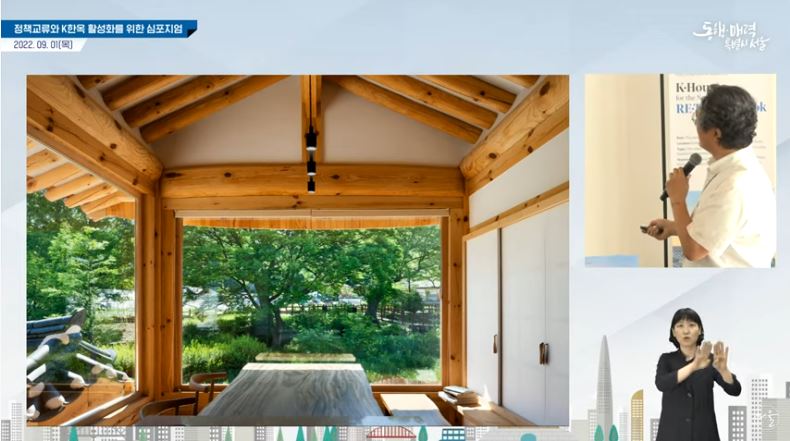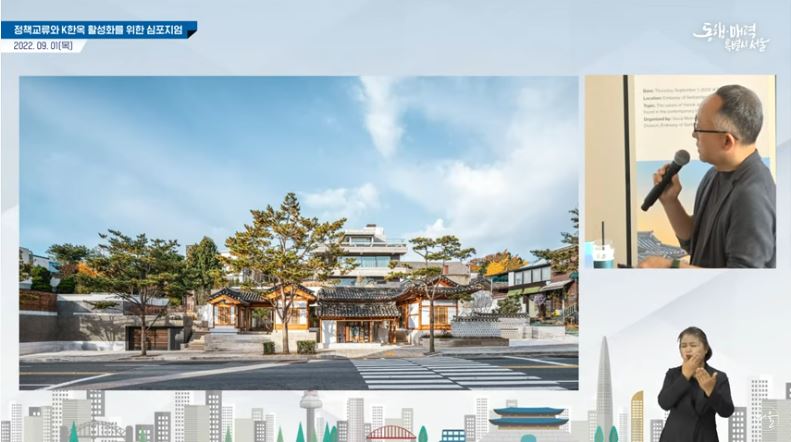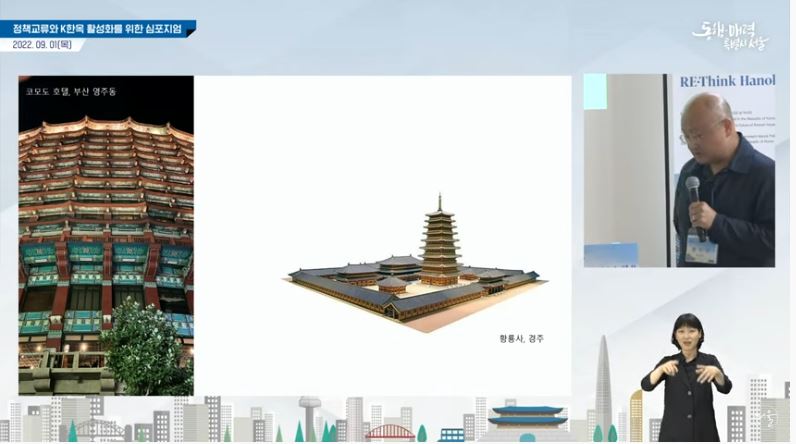On Sep. 1, the 2022 Hanok Policy Symposium hosted by Seoul Metropolitan Government Hanok Heritage Preservation Division and The Embassy of Switzerland in the Republic of Korea was held under the theme of ‘K•House RE•Think Hanok for the Next Generation’. The Embassy of Switzerland in the Republic of Korea (covered in SPACE No. 620), the symposium venue was designed by Burckhardt+Partner (principal, Wolfgang Hardt), a Swiss architectural firm, with the cooperation of Erae Architects (principal, Lee Inho), which has been evaluated as a modern reinterpretation of a hanok by borrowing elements such as the madang, Korean folding screen, and wooden structure. The event venue, also known as the ‘Swiss hanok’, is in line with the symposium’s purpose to discover and draw upon the future value of the hanok rather than to focus on the preservation of the hanok’s traditionality. The programme consisted of an embassy tour, opening ceremony, keynote talk, topic presentations and discussion. It is significant in that Choi Wook (principal, ONE O ONE architects), Cho Junggoo (principal, guga urban architecture), Hwang Doojin (principal, Doojin Hwang Architects), who have forged their own niches in traditional Korean architecture, gathered in one place to give topic presentations. In his presentation ‘sustainable value of hanok, two houses in gahoe-dong’, Choi Wook introduced the Sulwhasoo Bukchon Flagship Store + Osulloc Tea House Bukchon (2021, covered in SPACE No. 650), which is a renovation project of a hanok from the 1930s and a western-style house in the 1960s. He used stereobate to create a natural entrance point, and ʻONE O ONE Dictionaryʼ to introduce the minimal details of wooden structure. The ONE O ONE dictionary is composed of materials, connection methods, and colours, and one element is selected and combined from three compositions respectively. Cho Junggoo’s ‘house of our time, transformation of hanok’ suggests a ‘hanok-like house’ for those who feel that the tradition of the hanok poses certain challenges. He also introduced Cheonyeon-dong Hanok (2016) mentioned in ‘Following in the Footsteps of Madang-jip’ (covered in SPACE No. 629), which designed an atrium in some part of madang of an existing hanok, and ‘Knock Knock Heon’ (2016) which has modern elements like the entrance hall, which don’t belong to the hanok on the lower level, and the hanok elements on the upper reaches. In ʻera of urban civilization: universality of the hanokʼ, Hwang Doo-jin questioned what position the hanok could occupy in light of the global trend of pursuing high density urban planning, suggesting the potential of the multi-story hanok. The architectural professionals who participated in the symposium agreed to view the hanok as an object which is open to change, rather than fixed and completely flawless. We need buildings with the rigid identity of the hanok, but as the times change, we also require the evolving hanok as a form that will be a comfort to residents and adapted to the urban environment, which is one of the necessary elements to sustain and maintain the legacy of the hanok. by Park Jiyoun



2022 Hanok Policy Symposium / Screenshots from YouTube




